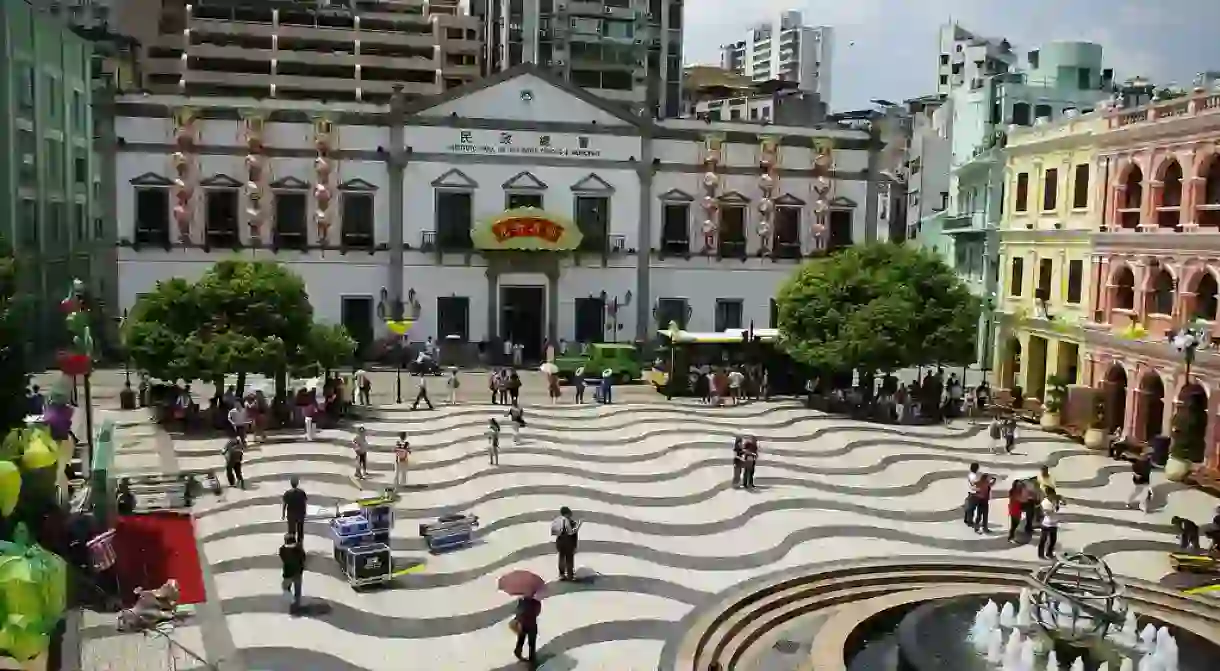Where to Find Macanese Culture in Macau

The Macau of today is dominated by huge, glitzy, Las-Vegas style casino resorts, but wander a little beyond the garish bright lights of its famous Cotai Strip and you’ll find small pockets of the city where the old Macau and traditional Macanese culture (of mixed Portuguese and Chinese origin) still hold on.
In the 18 years since Macau was handed back to China (after almost 450 years of Portuguese colonial rule), the city has changed dramatically. Its transformation into the world’s most successful gambling city has seen Macau become more Americanised with a spree of Las Vegas-style casinos and resorts. However, finding what remains of old Macau and its unique Macanese culture has become harder.
Who are the Macanese?
Historically, the Macanese people were mixed race (of mixed Portuguese and Chinese ancestry). Therefore, Macanese culture is the distinct mix of both southern Chinese and Portuguese influences.
However, the Macanese, who stayed after Macau was transferred back to Chinese sovereignty in 1999, are today in the minority. Fewer than 8,000 Macanese reside here. Meanwhile, Macau’s population of 600,000 is about 95% Chinese and rising. Surprisingly, more Macanese now live in the US and Canada than in Macau, having emigrated prior to the handover.

Preserving Macanese culture
One distinctly Macanese aspect of their culture is the now (critically endangered) Macanese Patois or “Patuá” as it is sometimes called. Originating in the 16th century, it was a Portuguese creole language spoken by ethnic Macanese. However, today it’s estimated that Macanese Patois is spoken by no more than 50 speakers in Macau. In 2009, the language was added to UNESCO’s Atlas of the World’s Languages in Danger and was labelled ‘critically endangered’. On the whole, Macanese Patois has been replaced by Standard Portuguese and Macau’s most widely spoken language, Cantonese.
Nevertheless, some members of the Macanese community in Macau are trying to revive their native language. For over 20 years, a local Patuá-language drama group called Doci Papiaçam di Macau have been preserving the language through original and humorous plays performed in Patuá by local actors. The group’s plays have become one of the most anticipated regular features in the annual Macao Arts Festival. Visitors to Macau can enjoy the plays too as the group present them with surtitles in English, Chinese and Portuguese.

Macanese cuisine
Another hallmark of Macanese culture that still exists is Macanese cuisine. Often credited as ‘the original fusion cuisine,’ it has a history dating back over 400 years. The Portuguese colonised Macau in 1557. The European settlers brought with them different herbs, spices and cooking methods like roasting, grilling and stewing, none of them traditional to the Chinese. Over time, this blend of southern Chinese cuisine and Portuguese ingredients, spices and cooking techniques, melded into a distinct style that became known as ‘Macanese.’
Some classic Macanese dishes include minchi (considered Macau’s national dish – it’s made from minced beef with soya sauce, onions and a fried egg, served with rice and/or fried potatoes). There are others like tacho (a fusion stew made with Chinese and Western ingredients), cappela (a baked meatloaf made with cheese, black olives and breadcrumbs, topped with crispy bacon), and lastly Portuguese chicken (made with turmeric powder, black olives and sausages.)
One place to sample some of these classic Macanese dishes is Riquexo restaurant, the oldest Macanese restaurant in the heart of old Macau. The restaurant is a rare survivor of the upheavals of recent times. But inside, the spirit and soul of old Macau lives on thanks to the Macanese community who socialise and dine here together.

Historic Centre of Macau
The historic centre of Macau was inscribed on the UNESCO World Heritage List in 2005, with over 20 locations that exhibit the unique co-existence of two contrasting cultures: Chinese and Portuguese. Perhaps the most symbolic site that represents Macau’s unique blend of East and West is Senado Square. This charming town square is surrounded by numerous distinctive pastel-coloured monuments of Macau’s colourful history – it’s here where you can clearly see the blending of Macau’s Portuguese and Chinese heritage. The square was a popular meeting place for the Chinese and Portuguese in the 16th to 18th centuries. Today, it’s the perfect spot to come and soak up the unique culture of Macau and watch the world go by. Such is Senado Square’s significance, there’s a saying that goes ‘You haven’t been to Macau if you haven’t been to Senado Square.’














